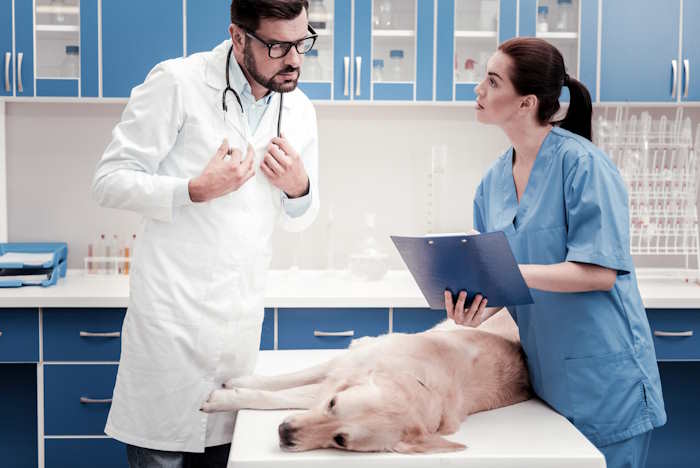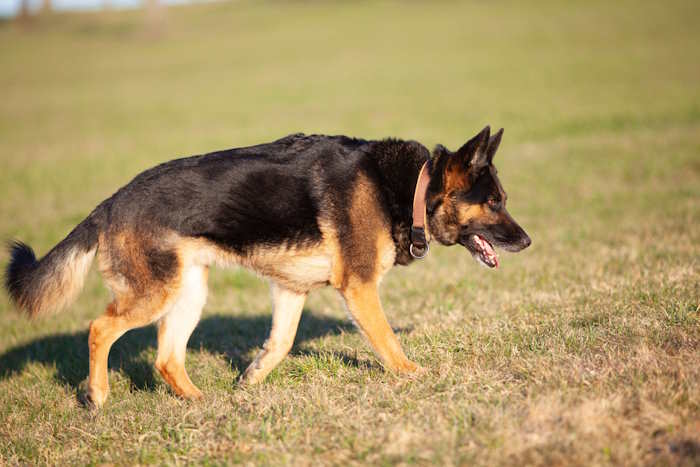Holistic Care for Dogs with Hip Dysplasia
Holistic Care for Dogs with Hip Dysplasia |Published 10-05-2023
Providing comprehensive care for a dog with hip dysplasia, a skeletal ailment, involves a delicate balance of challenges and gratification.
Hip dysplasia, an inherited condition, manifests as an abnormal hip joint development, often resulting in pain and compromised mobility.
While a definitive cure remains elusive, numerous effective strategies exist to manage the condition and elevate the well-being of your loyal companion.
Dogs affected by hip dysplasia can continue to relish active and joyful lives by offering attentive care and implementing appropriate management practices.

Exploring the Roots of Hip Dysplasia in Canines
Hip dysplasia is a prevalent ailment in the canine domain, inflicting substantial pain and discomfort. This condition stems from an abnormal hip joint development, resulting in joint instability and an array of painful symptoms.
Although hip dysplasia affects dogs across various breeds, certain breeds demonstrate a heightened susceptibility.
Acquainting yourself with the fundamental causes of hip dysplasia in dogs can empower pet owners to identify early indicators and seek timely intervention for their cherished pets.
Genetics emerges as a predominant cause of hip dysplasia in dogs. Due to their genetic composition, specific breeds display an elevated predisposition to this condition.
Notable examples encompass German Shepherds, Labrador Retrievers, Golden Retrievers, Rottweilers, and Bullmastiffs. Dogs descending from a lineage with a historical presence of hip dysplasia or originating from parents afflicted by the condition face an escalated risk of developing it themselves.
Another contributing element to hip dysplasia skeletal disease in dogs is obesity or rapid weight gain during the crucial phases of puppyhood or adolescence.
Overweight dogs may struggle to adequately support their body weight on their hips during activities like running or jumping, potentially exacerbating the condition over time. This risk amplifies, especially among larger breeds.
Besides genetics and weight-related factors, early developmental challenges and anomalous bone growth during a dog’s growth phases can also influence the onset of hip dysplasia.
Exercise and Dietary Advice for Dogs with Hip Dysplasia
As a dog owner, being mindful of your pet’s potential development of hip dysplasia is crucial. Hip dysplasia is a condition where the hip joint fails to function optimally, resulting in pain and constrained mobility.
Although it can affect any breed, certain breeds have a higher susceptibility. Fortunately, you can undertake several preventive and management measures to mitigate the impact of hip dysplasia on your pet.
Optimal Exercise
Exercise is pivotal in aiding dogs with hip dysplasia to sustain good health and lead an active life.
Opt for low-impact activities like swimming or short walks on even surfaces as they minimize stress on the hips while providing beneficial physical activity.
Activities involving jumping or running up stairs should be avoided, as they can strain the hips and exacerbate hip dysplasia symptoms.
Additionally, closely monitor your dog’s exercise routine to prevent excessive fatigue from overexertion during play or outdoor walks.
Equally important is maintaining a healthy diet to manage the symptoms of canine hip dysplasia effectively. Dogs with this condition should be fed a well-balanced diet specifically tailored for them, as recommended by their veterinarian.
Which dog breeds are commonly impacted by hip dysplasia?
Hip dysplasia is a condition that can impact dogs across various breeds. Still, it tends to be more prevalent in specific breeds due to their genetic inclinations and distinct body structures.
Some of the larger breeds commonly associated with a higher likelihood of hip dysplasia include:

German Shepherds: This breed is notably prone to hip dysplasia, often experiencing severe cases of the condition.
Labrador Retrievers: Another breed with an elevated susceptibility to hip dysplasia, often influenced by their active lifestyle.
Golden Retrievers: They are also known to be susceptible to hip dysplasia, with factors such as size and activity levels potentially exacerbating the condition.
Rottweilers: This breed has a genetic predisposition to hip dysplasia, and if left unmanaged, it can significantly impact their overall quality of life.
Saint Bernards: Due to their substantial size, Saint Bernards face an increased risk of developing hip dysplasia, causing considerable discomfort and mobility challenges.
Great Danes: Another giant breed frequently affected by hip dysplasia, likely due to their immense size and weight.
Bulldogs and Brachycephalic Breeds: While less prevalent than in larger breeds, brachycephalic breeds like Bulldogs can also experience hip dysplasia.
Mastiffs, including English Mastiffs and Bullmastiffs: Due to their substantial size and weight, these breeds are susceptible to hip dysplasia.
Hip Dysplasia in Small to Medium-sized Breeds
Hip dysplasia is less common in smaller to medium-sized breeds but still a potential health issue. Some smaller dog breeds that can experience hip dysplasia include:

French Bulldogs: Despite their small size, they can develop hip dysplasia due to genetic predispositions.
Dachshunds: These long-bodied dogs can be prone to hip dysplasia, especially as they age and their joints face increased stress.
Pugs: Pugs, a compact and muscular breed, can be susceptible to hip dysplasia as they age, which can cause discomfort and mobility issues.
Shih Tzu: Shih Tzus are small dogs that can develop hip dysplasia, primarily due to genetic factors.
Cocker Spaniels: Although they are medium-sized, Cocker Spaniels can also experience hip dysplasia.
Bulldogs: Bulldogs, including English Bulldogs, are known to be prone to hip dysplasia due to their body structure and genetics.
Pomeranians: Pomeranians, despite their small size, can sometimes suffer from hip dysplasia, although it is relatively rare in this breed.
Conclusion
Caring for dogs with hip dysplasia requires dedication and attentiveness. Providing the appropriate care, including exercise tailored to their condition, a suitable diet, regular check-ups, and potential medical treatments, can significantly enhance their comfort and quality of life.
By being proactive and considerate in their care, we can ensure our furry friends with hip dysplasia lead fulfilling and joyful lives.
Dogs with Hip Dysplasia
Pin for Future Reference

Does This Article Deserve Your Thumbs Up?
We always appreciate your support and encouragement. Your thumbs up means so much to us. Please like this article.
If you find this page or any page on Small Dog Place Helpful, or useful in anyway, I’d love it if you would click the small heart found on the bottom right of each page.
You can also share or bookmark this page — just click on the:

Free Monthly Newsletter
Sign Up for Our Free Newsletter and get our Free Gift to You.
my E-book, The Top 10 Mistakes People Make When Choosing a Dog (and how to avoid them)




